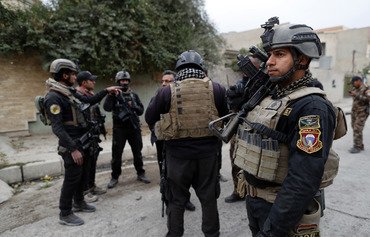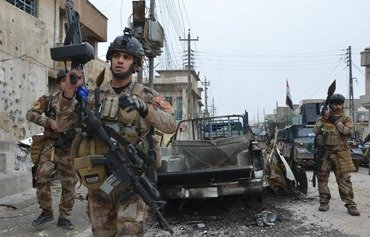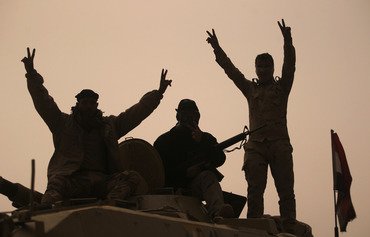In a desperate bid to hold on to the Ninawa province city of Mosul, its last Iraqi stronghold, the "Islamic State of Iraq and the Levant" (ISIL) has employed a range of vicious new strategies, security officials tell Diyaruna.
In the weeks since October 17th, when the battle to liberate Mosul was officially launched, Iraqi forces have encountered hundreds of booby-trapped cars and enemies that are moving underground in a vast network of tunnels.
ISIL snipers also have been active, hiding among the civilian population, which has called for caution on the part of the advancing forces.
Over the course of two years, ISIL elements prepared for the inevitable battle to oust them from the city by constructing a wide network of underground tunnels, Counter-Terrorism Service (CTS) spokesman Sabah al-Numan told Diyaruna.
The group used "heavy equipment for the drilling, such as mechanical drills and bulldozers, which is reflected by the volume and depth of the tunnels", he said.
ISIL's prisoners may have been forced to help with this heavy work, he added.
CTS forces have faced this challenge before, during the battle for Fallujah, he said, and have become adept at addressing it.
"We faced tunnels in the liberated areas of Bartella and Gogjali ," he said. "Tunnels there helped elements of the group flee and did not help them in engaging and fighting."
As security forces move into residential neighbourhoods, he pointed out, the tunnel tactic becomes less effective, as digging trenches under houses and alleys is more difficult than it is in the open areas.
Human shields
The greatest obstacle liberating forces advancing in eastern Mosul face is the group's use of civilians as human shields , al-Numan said.
"They [ISIL] fire mortar shells from houses where people live and their snipers go on roofs without taking civilian lives into account, which is something that restricts the armed forces in responding to those sources of fire," he said.
ISIL's use of civilians as human shields is not limited to the use of their houses as locations from which to strike Iraqi forces, said Sheikh Nazhan al-Lahibi, a tribal mobilisation forces leader in southern Mosul.
The group's fighters "are marching hundreds of families with them wherever they move to protect themselves", he told Diyaruna.
ISIL is trying to gather the largest number of civilians inside the residential neighbourhoods where its fighters are stationed to block the advance of Iraqi troops and the fire from Iraqi weapons, he said.
With this move, he added, it shows no regard for the lives and well being of Mosul residents, including the children and women among them.
Wooden tanks
While ISIL has been using car bombs and suicide bombers to slow the onslaught of the ground forces, it has made use of deceptive tactics in trying to thwart Iraqi and coalition airstrikes.
This includes using wooden tanks as decoys and the smoke from oil wells it has set alight to conceal the presence and movements of its fighters.
After the liberation of al-Buaweizeh, Iraqi forces found a large warehouse containing a number of wooden structures designed to look like tanks and armoured vehicles, said 16th army brigade media official Lt. Col. Abbas Ahmed.
ISIL was planning to use these models as decoys to draw the fire of the air forces supporting the progress of ground forces away from their real armoured vehicles, he told Diyaruna.
Ministry of Defence photographs of these "vehicles" reveal a wooden Humvee painted to resemble a real one, supported by wooden wheels, and another designed to look like a tank that had not yet been painted.
"Before that, the group set fire to dozens of oil wells in the area around the city of Mosul and specifically in the cities of al-Qayyarah and Shura, south and south-east of the city, in order to create a layer of smoke," Ahmed said.
This was intended to keep military aircraft from detecting ISIL fighters, he said.
Military leaders have stressed this tactic was completely ineffective, he added.

![Iraqi security forces have found wooden tanks in Mosul used by the 'Islamic State of Iraq and the Levant' as decoys in a desperate attempt to thwart Iraqi and coalition airstrikes. [Photo courtesy of the Iraqi Ministry of Defence]](/cnmi_di/images/2016/11/24/6647-iraq-wood-tank-600_384.jpg)






